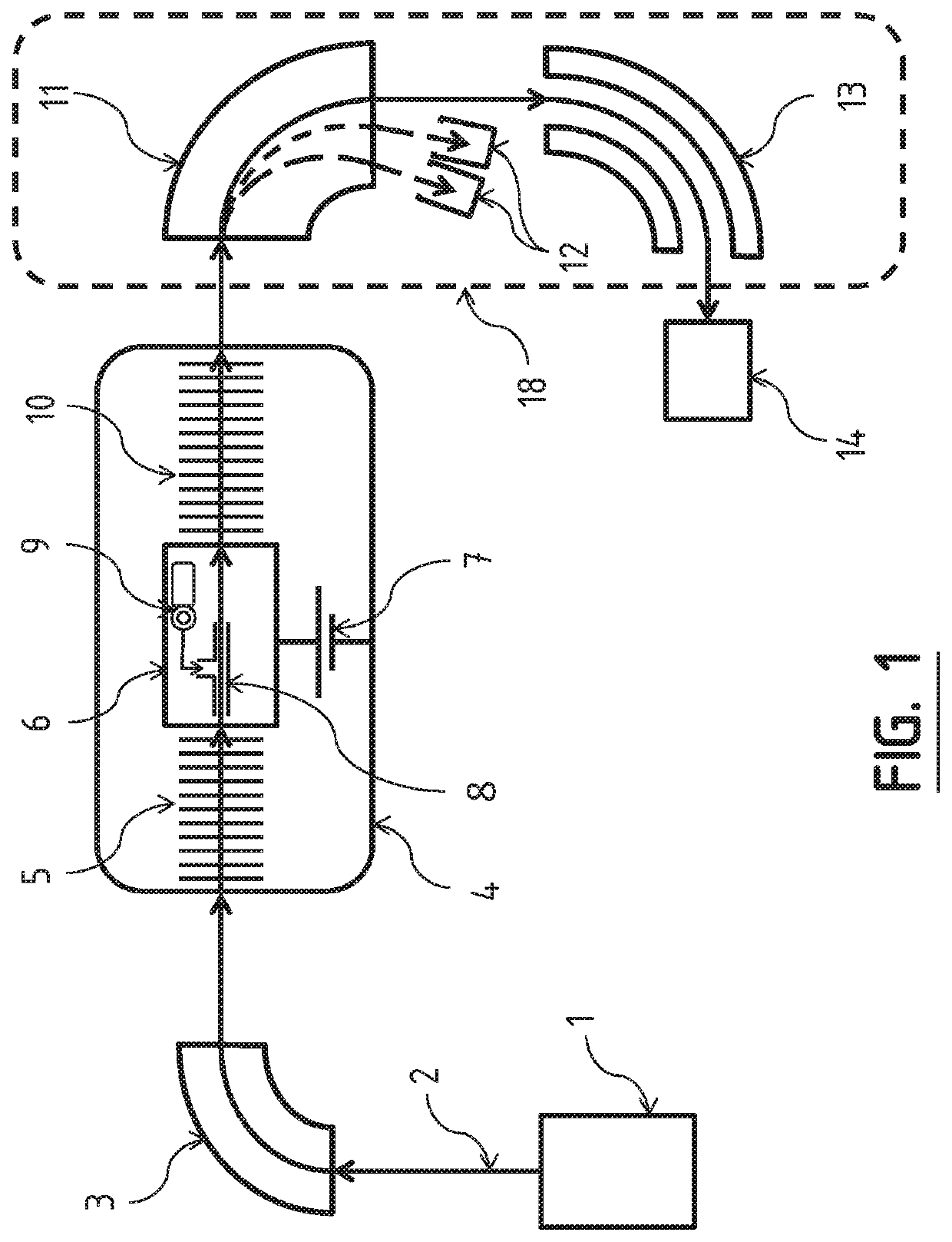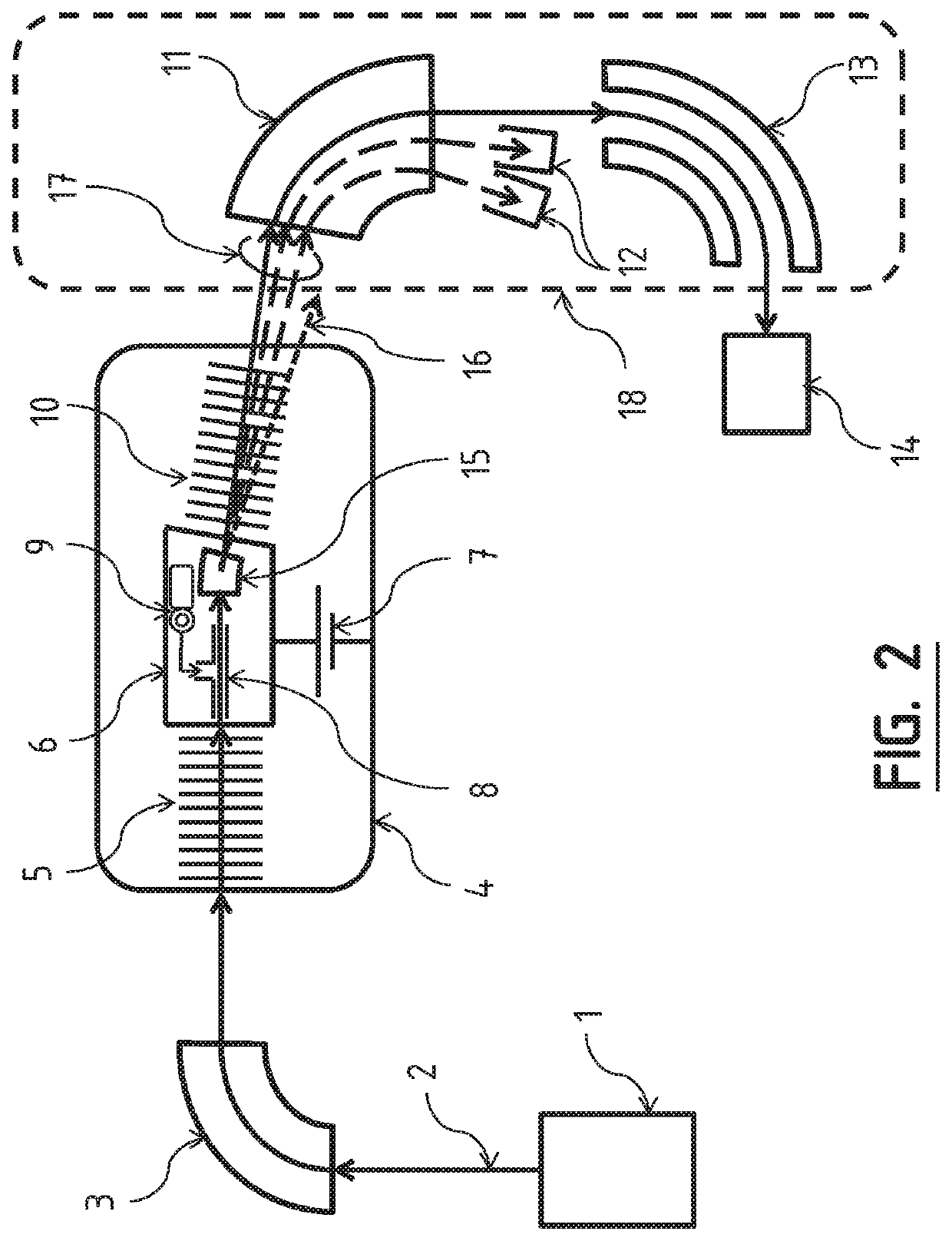Accelerator mass spectrometry system and associated method
a mass spectrometry and accelerator technology, applied in mass spectrometers, spectrometer combinations, particle separator tubes, etc., can solve the problems of increasing the background level of instruments, increasing the cost, complexity and footprint of the accelerator mass spectrometry system, and unintentionally other particles, so as to effectively remove the otherwise interfering ions, the effect of a small bending radius and a small bending radius
- Summary
- Abstract
- Description
- Claims
- Application Information
AI Technical Summary
Benefits of technology
Problems solved by technology
Method used
Image
Examples
Embodiment Construction
[0022]Referring to FIG. 1, a solid or gaseous sample under investigation is introduced into an ion source 1. In the ion source at least part of the sample material is ionized into the negative charge state. In an electrostatic field region, the negative ions are extracted from the ion source to form a negative ion beam 2. The isotopes of interest are then selected in a cyclic fashion by a first mass analyzer 3 in which each isotope is selected after the other for a specific duration for further transport into the tandem accelerator 4. In a first accelerating section 5 of the tandem accelerator 4, the ions are accelerated towards a high-voltage terminal 6 that is maintained at a positive potential by a high-voltage power supply 7. In the terminal, the ions are directed through a so called stripper 8 that consists of a tube into which a small amount of gas is admitted from a gas supply system 9. In the stripper 8 the gas pressure is relatively high and the incoming negative ions are c...
PUM
 Login to View More
Login to View More Abstract
Description
Claims
Application Information
 Login to View More
Login to View More - R&D
- Intellectual Property
- Life Sciences
- Materials
- Tech Scout
- Unparalleled Data Quality
- Higher Quality Content
- 60% Fewer Hallucinations
Browse by: Latest US Patents, China's latest patents, Technical Efficacy Thesaurus, Application Domain, Technology Topic, Popular Technical Reports.
© 2025 PatSnap. All rights reserved.Legal|Privacy policy|Modern Slavery Act Transparency Statement|Sitemap|About US| Contact US: help@patsnap.com


